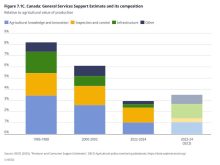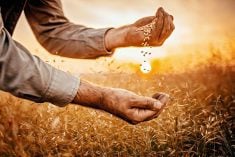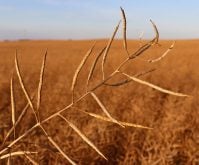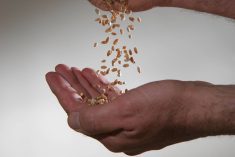Farmers need to thoroughly understand their risk exposure as they view the Bank of Canada’s latest interest rate hike, says Farm Credit Canada (FCC) economist J.P. Gervais.
The Bank of Canada on Sept. 7 announced a 75-basis-point increase in its key rate, bringing it to 3.25 per cent. It followed a 100-basis-point increase in July and was the fifth consecutive increase since March, when the bank began its quantitative tightening strategy to fight inflation.
The increase in July was an indicator of things to come as the Bank of Canada signalled its hard-line stance against inflation. Gervais says the latest increase was expected but what stood out most for him was the message that more rate hikes are coming.
Read Also

Manitoba Ag Days 2026 coming up fast
Canada’s largest indoor farm show, Manitoba Ag Days, returns to Brandon’s Keystone Centre Jan. 20-22, 2026. Here’s what to expect this year.
The bank’s announcement concluded with the following: “As the effects of tighter monetary policy work through the economy, we will be assessing how much higher interest rates need to go to return inflation to target. The Governing Council remains resolute in its commitment to price stability and will continue to take action as required to achieve the two per cent inflation target.”
- [COMMENT] Light at the end of inflation tunnel?
Gervais wonders how much higher the rates will go.
“I think the bank is going to be very deliberate, very persistent, and very committed to bringing inflation down.”
Based on the aggressive nature of the latest hikes, he doesn’t expect inflation to lower until later in 2023.
“So, for some time, we are going to have to deal with higher interest rates at a time where margins are somewhat tight,” he says.
This means farmers must ask themselves tough questions.
“First and foremost, just understand the risk you have in your operation,” says Gervais. Then farmers must consider whether they’re comfortable with that level of risk, and if not, what they can do to lower it.
“The best advice that I could give is to surround yourself with folks that are able to help you figure this out,” Gervais says.
There is concern as agricultural commodity prices weaken in the face of rising prices for inputs, but overall, Gervais says the agricultural industry remains robust.
“The demand for what we grow and what we produce, both at the farm and at the food and the processing level, remains very strong,” he says. Much of that demand is the result of constrained supply globally related to the war in Ukraine.
Even if farmers lower risk by postponing investments in new equipment or land, Gervais doesn’t see a major slowdown for the industry, though some slowing is expected. That’s the reason for hiking interest rates.
However, Gervais says it will take time for these rate hikes to work their way through the system.
“It’s going to be felt. But if you just focus on the agriculture and food sector, I’m still fairly optimistic that we have really strong demand. From that standpoint, I think businesses will still make investments.”
The next scheduled date for announcing the rate target is Oct. 26.
















